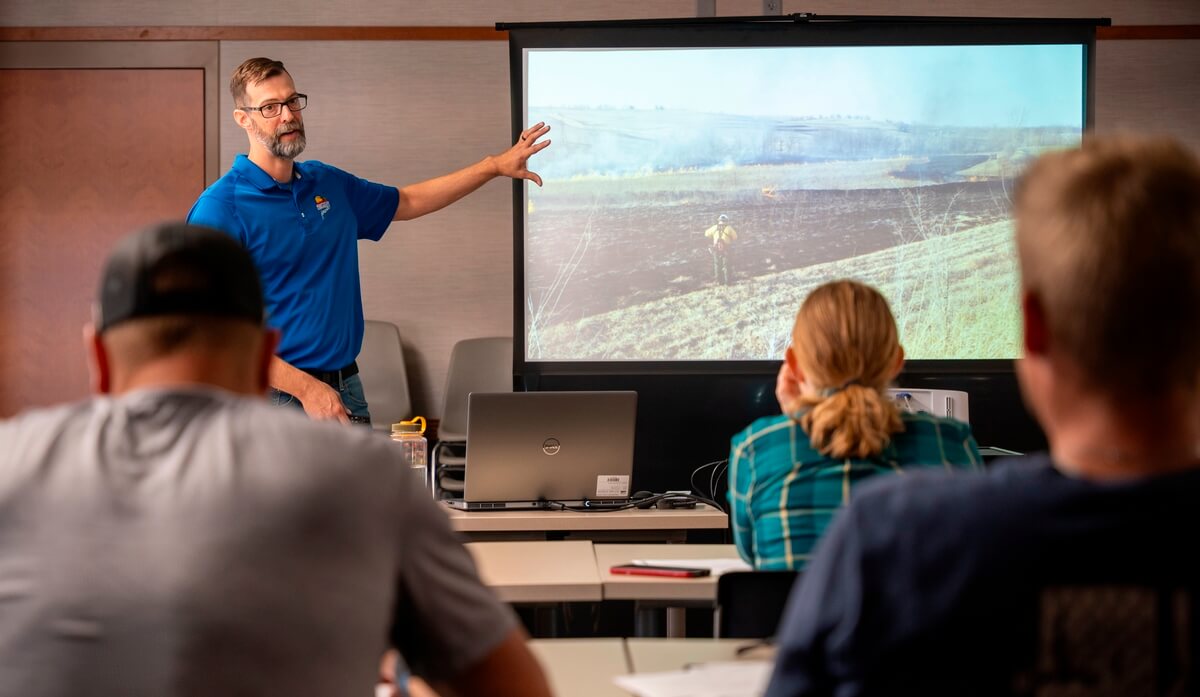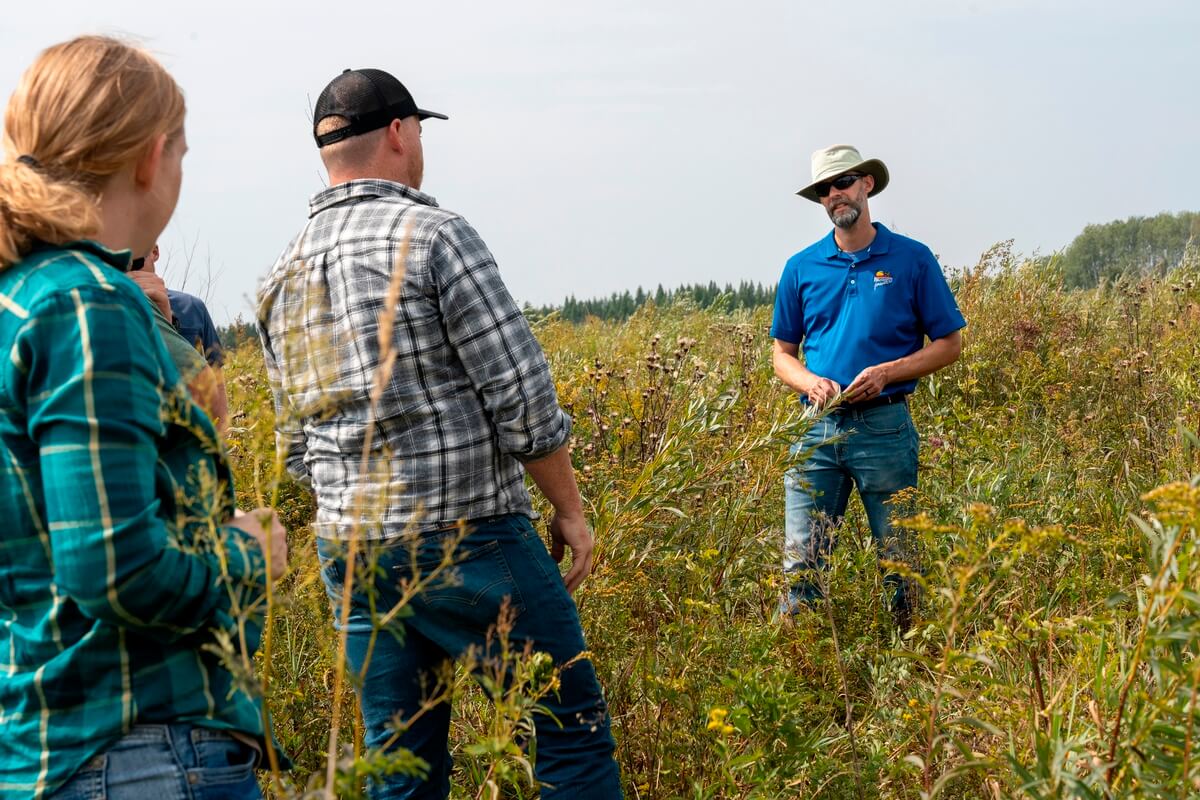Burn coordinator promotes PBAs

Prescribed Burn Coordinator Jason Andersen leads a training session.
In state with deadly fire history, prescribed burn coordinator focuses on associations for safe, effective prairie projects
Partnership with Natural Resources Conservation Service brings new position to Minnesota Pheasants Forever staff
It’s no secret that Minnesota has a troubled history with fire.
In the Autumn of 1918 wildfires near Hinckley and Cloquet killed 453 people and destroyed 38 communities, the worst natural disaster in state history. A previous fire in 1894 around the same area also killed more than 400.
Even in recent years, the Pagami Creek and Saganaga Lake fires near the Boundary Waters Canoe Area Wilderness waters reached thousands of acres.
While those fires ravaged the state’s northern forests, that history has also impacted the perception of fire in other parts of Minnesota.
Prescribed Burn Coordinator Jason Andersen hopes to overcome that history and return fire as a management tool to the southern and western portions of the state.
In partnership with the National Resources Conservation Service (NRCS) and others, Andersen was hired in early 2023, the first Minnesota Pheasants Forever prescribed burn coordinator.
Three words summarize his vision for the use of fire in grasslands management in Minnesota: Safe. Effective. Accessible. His goal is to help private landowners utilize prescribed burning to reach their habitat goals. Andersen also provides technical assistance and training to NRCS staff and landowners.

“We tend to think of it as a management tool in the toolbox, but really fire is a natural part of these ecosystems that we also are a part of. With my position, I’m trying to get more of that natural part of the ecosystem back on the landscape in a safe and effective way,” Andersen said.
Landowners can face barriers of liability, equipment and training when planning to utilize fire in prairie management.
That’s where Prescribed Burn Associations (PBAs) can help.
The associations are built around the basic idea of neighbors helping neighbors, with more formal structure and additional training involved. Pheasants Forever can support organizations through equipment and training.
The PBA model is widely used in other states but has not been implemented in Minnesota.
Last summer, Andersen held training sessions focused on goal-driven fire designed to help conservation planners assist landowners with prescribed burn planning. He also held informational meetings on PBA formation in several counties.
The associations are landowner-led. Once someone gets involved and gets things moving the momentum takes it from there and the groups can grow.
“There’s something satisfying about bringing the natural fire cycle back to tallgrass prairie,” Andersen said. “Hopefully the PBA model really takes hold in Minnesota. It’s good for landowners and certainly good for the landscape.”
-By Dave Schwarz, Minnesota Outreach Coordinator

